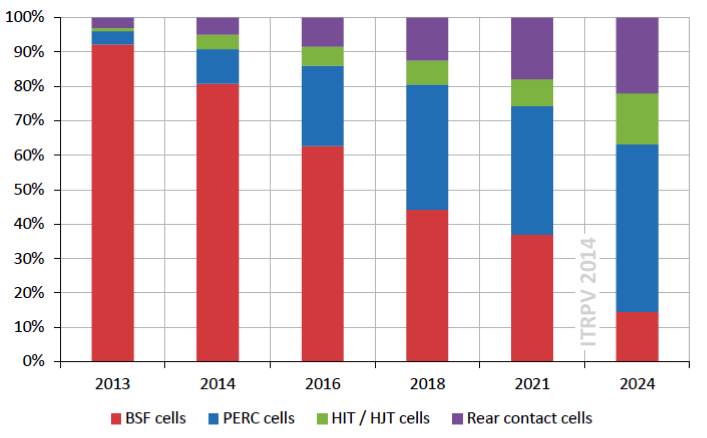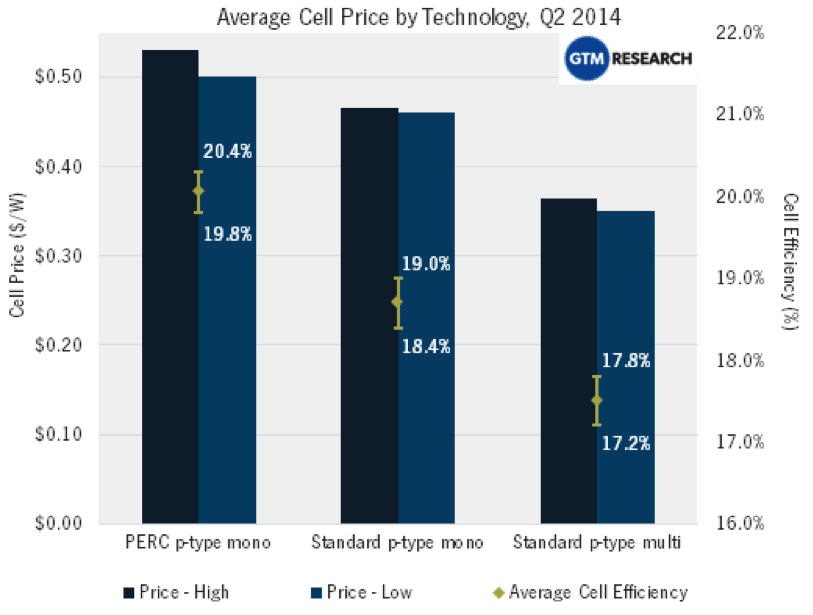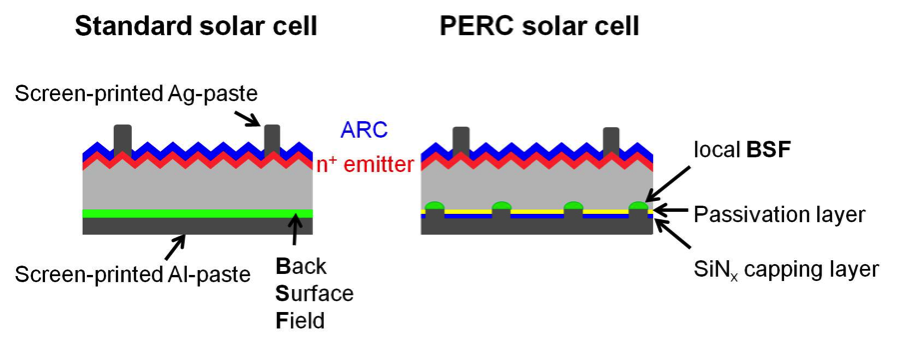The Passivated Emitter and Rear Cell (PERC) structure offers a 1% efficiency boost (absolute) and improves the current state-of-the-art by integrating a high-efficiency rear surface design. The PERC design has steadily gained traction in recent years and is compatible with common screen printing techniques, making for a relatively smooth transition for manufacturers such as JA Solar and SunEdison.
PERC set to dominate future crystalline silicon PV market
The PERC design currently accounts for only 10% of worldwide crystalline silicon solar cell production but is expected to be the dominant cell architecture by 2024, projected to reach a market share of 45%. The technology
Expected market share of different crystalline silicon solar cell structures. BSF cells refer to standard screen printed cells. [Image Credit: ITRPV]
Recent cost figures help explain why PERC structures still lag behind its multi and mono screen print competition. With the cell structure offering – on average – a 7.5% relative increase in efficiency with a 13% higher price tag, it is currently pinned closer towards the premium performance market.
PERC cells offer a 7.5% relative increase in efficiency over standard screen printed mono-crystalline cells, but come with a 13% average increase in cell costs. [Image Credit: GTM Research Global PV Pricing Outlook Q3 2014]
However, the price per watt for PERC devices is expected to drop significantly over the coming years with improvements in R&D and manufacturing, corresponding to the increase in PERC market share projected by the ITRPV.
How does the PERC structure improve cell performance?
There is a power loss mechanism common to all solar cells called ‘recombination’. It is a process by which electric charge–the little workers which enable electricity to flow through and be extracted from the cell–is lost and made unusable.
As a general rule for most screen printed solar cells, there is recombination occurring at any region where metal comes into contact with silicon i.e. at the aluminium pad on the rear and the silver fingers on the front. For standard screen printed cells, less than 3% of the front surface is covered in metal and so much of the recombination at the surface can be minimised with the use of insulating layers such as silicon dioxide and silicon nitride. However, the rear surface remains susceptible to high levels of recombination as it is completely covered by aluminium.
The PERC cell reduces recombination at the rear by placing a patterned insulating layer between the silicon and the aluminium, such that the aluminium only comes into contact with a small fraction of
The rear aluminium pad of PERC structures contact only a small fraction of the silicon surface compared to standard screen printed solar cells. [Image Credit: ISFH]
The PERC structure adds to the list of quiet innovations which will help keep solar cells processed using screen printing on top of global PV sales for years to come.
Top Image Credit: Meyer Burger
© 2015 Solar Choice Pty Ltd


